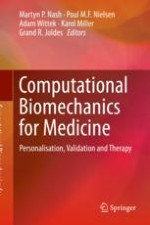2020 | OriginalPaper | Chapter
A Biomechanical Study on the Use of Curved Drilling Technique for Treatment of Osteonecrosis of Femoral Head
Authors : Mahsan Bakhtiarinejad, Farshid Alambeigi, Alireza Chamani, Mathias Unberath, Harpal Khanuja, Mehran Armand
Published in: Computational Biomechanics for Medicine
Publisher: Springer International Publishing
Activate our intelligent search to find suitable subject content or patents.
Select sections of text to find matching patents with Artificial Intelligence. powered by
Select sections of text to find additional relevant content using AI-assisted search. powered by
